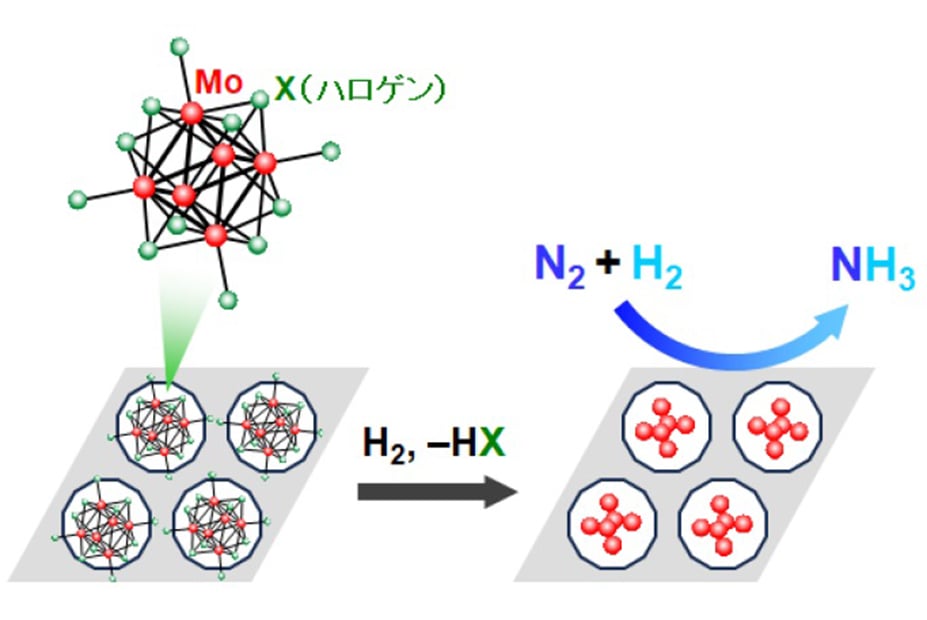Share this
Authors
Yuya Ashida, Takuro Mizushima, Kazuya Arashiba, Akihito Egi, Hiromasa Tanaka, Kazunari Yoshizawa, and Yoshiaki Nishibayashi
Abstract
Mechanistic insight into the catalytic production of ammonia from dinitrogen is needed to improve the synthesis of this vital molecule. Here we study the use of samarium diiodide (SmI2) and water in the presence of molybdenum complexes that bear PCP-type pincer ligands to synthesize ammonia. The proton-coupled electron transfer during the formation of a N–H bond on the molybdenum imide complex was found to be the rate-determining step at high catalyst concentrations. Additionally, the dimerization step of the catalyst became the rate-determining step at low catalyst concentrations. We designed PCP-type pincer ligands with various substituents at the 5- and 6-positions and observed that electron-withdrawing groups promoted the reaction rate, as predicted by density functional theory calculations. A molybdenum trichloride complex that bears a trifluoromethyl group functioned as the most effective catalyst and produced up to 60,000 equiv. ammonia based on the molybdenum atom of the catalyst, with a molybdenum turnover frequency of up to 800 equiv. min−1. The findings reported here can contribute to the development of an environmentally friendly next-generation nitrogen-fixation system.
Nature Synthesis: https://www.nature.com/articles/s44160-023-00292-9
These Related Stories
